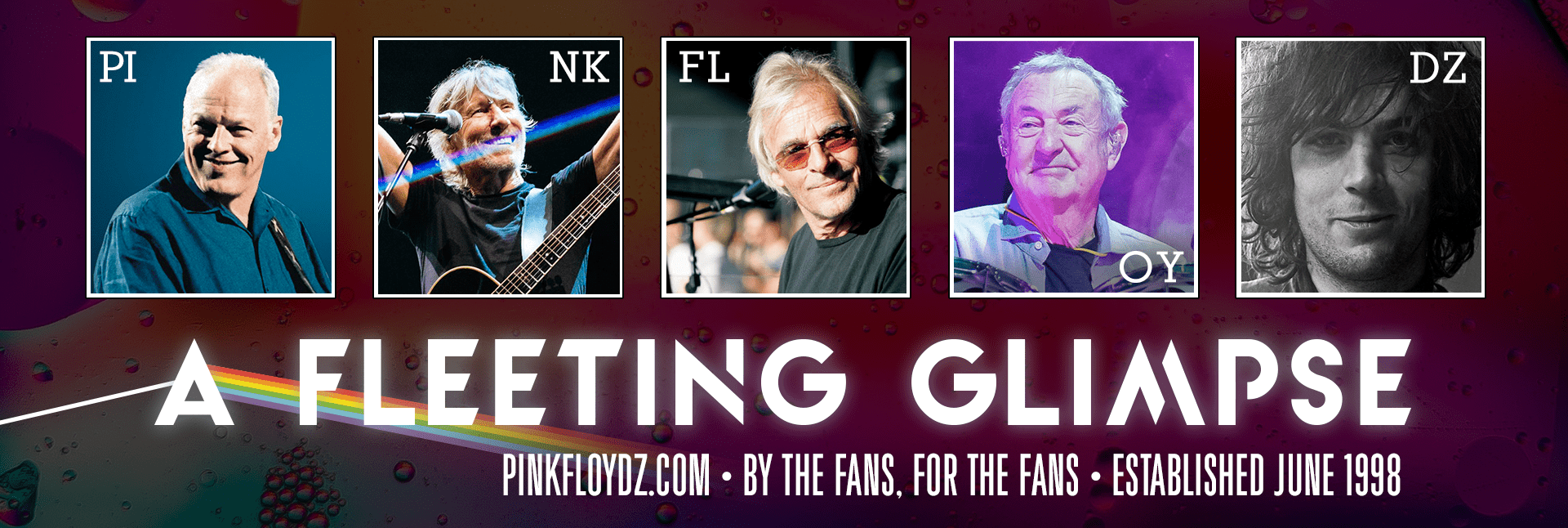People Magazine 1984 article on David Gilmour’s solo album “About Face”
No longer up against The Wall, Gilmour is the first member of the Floyd to hit the road alone.
Quickly now, what pop group or singer has had the longest run on the Billboard album charts? Elvis? The Beatles? Bing Crosby?
Before you give up, a few helpful hints. Though this band has been touring and recording for 16 years with only one important lineup change, you have probably never heard of a single member, past or present. Many rock fans would have trouble naming any of their songs. Group members won’t allow their likeness to grace the covers of their albums, they almost never grant interviews, and they’d rather be vivisected than make a video for MTV. Right away, you know we’re not talking about the Rolling stones.
Okay. Trivial Pursuit loser, try Pink Floyd. There has never been anything to approach their 1973 phenomenon, Dark Side Of The Moon, and probably there never will be again.
When the album came out, the Floyd was a British group with one minor hit and an acid-head cult following. Dark Side, bleak and gothic, reached out and tapped some previously unreached citizens on our planet. As of March 10 it will have been on the Billboard Top 200 for 510 consecutive weeks. Five. Hundered. And. Ten. On May 19 it should become the first uninterrupted 10-year chart album ever.
To put this feat in perspective, consider that Dark Side surpassed the former champ (Johnny Mathis’ Greatest Hits) five months ago. The next-longest-running album of original pop music (Carol King’s Tapestry) pooped out after 320 weeks. Michael Jackson’s Thriller (a lousy 64 weeks so far) is hardly worth a mention.
How do you figure it?
Like everyone else, David Gilmour hasn’t a clue. “It’s always baffled me, still baffles me,”says the man whose otherwordly, space-probe guitar licks are most closely identified with the unmistakeable Pink Floyd sound. “I mean, when we made it, we knew it was the best we’d done. But we hadn’t even gone gold before then.”
Now that he’s decided to step out on his own with a solo album, About Face, and an American tour in May and June, Gilmour, 37, is relaxing in the customary Pink prohibition against speaking to the press. In his hotel suite overlooking Manhattan’s Central Park, slouched on a couch in jeans, sport shirt and red jazz shoes, he ruffles his short-cropped brown hair as wife Ginger calls England to talk to their daughters Alice, 7, Clare, 3, and Sarah, 2.
“Pete Seeger is one of my favorite people,” says Gilmour, the acid-music king who learned to play the guitar from the gentle banjo-picking folkie’s instructional book-and-record set.
Gilmour joined Pink Floyd early in 1968 to back up–and eventually replace–the band’s visionary founder, Syd Barrett. Barrett had named the band after two southern bluesmen, Floyd Council and Pink Anderson. Unfortunately, blues flowed into psychedelia, and Barrett, after numerous acid trips, became “pretty strange,” recalls Gilmour, and was invited to quit the band. It was left to Gilmour, bass player Roger Waters, drummer Nick Mason and keyboardist Rick Wright to carry on. a one time language student, Gilmour was inspired by Bob Dylan’s first album to drop out at 18 to play rock. By 1964, before most bands had heard of the drug, he had already gone through his LSD phase.
“None of us was ever a great, passionate drug fiend,” Gilmour says, despite the legends–and Barrett’s very real permanent disability–to the contrary. “We said that, but people don’t hear things they don’t want to hear. A lot of people think you’re on their wavelength, when really you’re not. We got mail from people telling us we were sending them individual messages that they were answering. Very, very odd.” That was another reason, he says, why the band kept such a low profile: “The fans might have gotten too much information about us sitting at home watching television and drinking beer.”
Not that the old brew-sipping homebody has totally lost his edge. Gilmour’s second solo LP contains two anti-Cruise missle songs, one dirge that has to be aimed at killer-writer Jack Henry Abbott–and no love songs. Still, the Gilmour sense of humor surfaces in an instrumental titled Let’s Get Metaphysical. There are also moments of eerie beaty from this scarred rock veteran, soaring lyrics about glinting missles floating in and out of the blue, blue sky. “I think you can write fatalistic lyrics,” he says, “which may discuss morbid or unhappy ends. but they can be uplifting and joyful at the same time. there is beauty in melancholy.” –CHET FLIPPO
